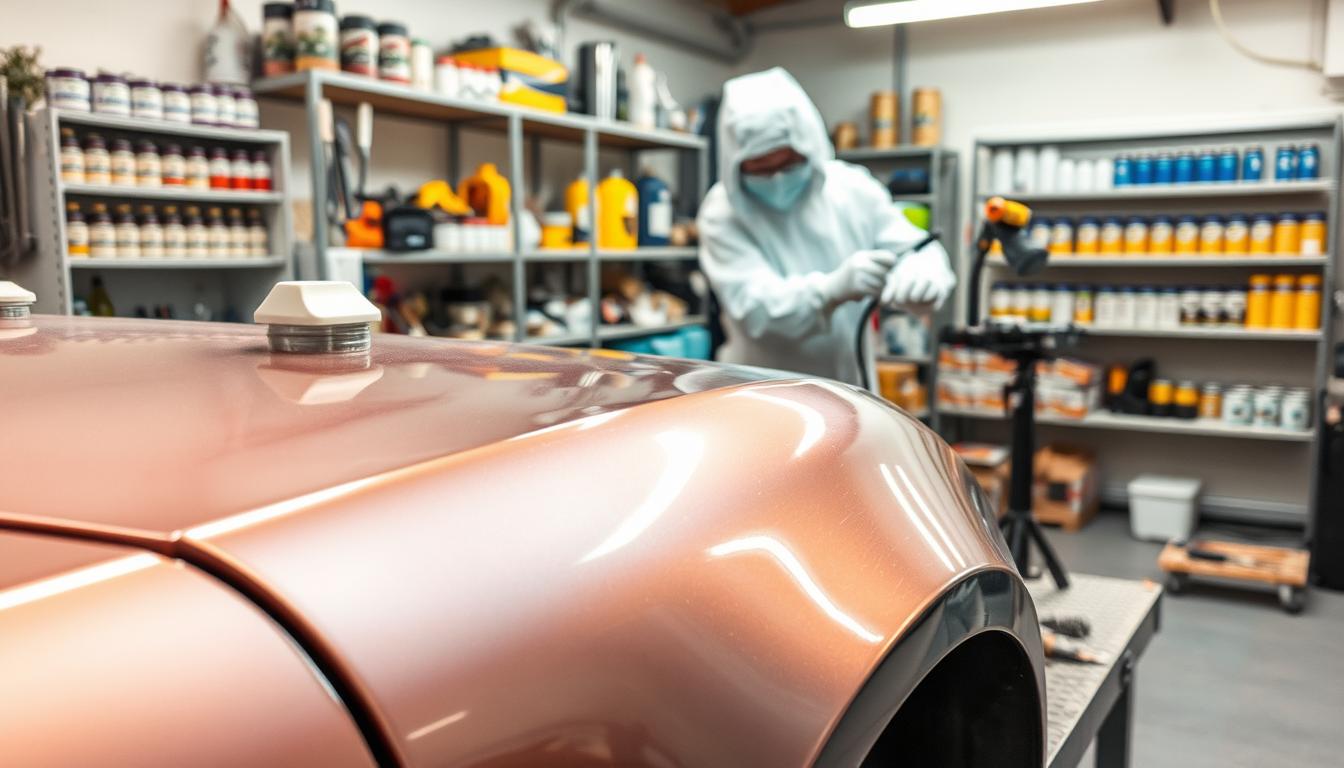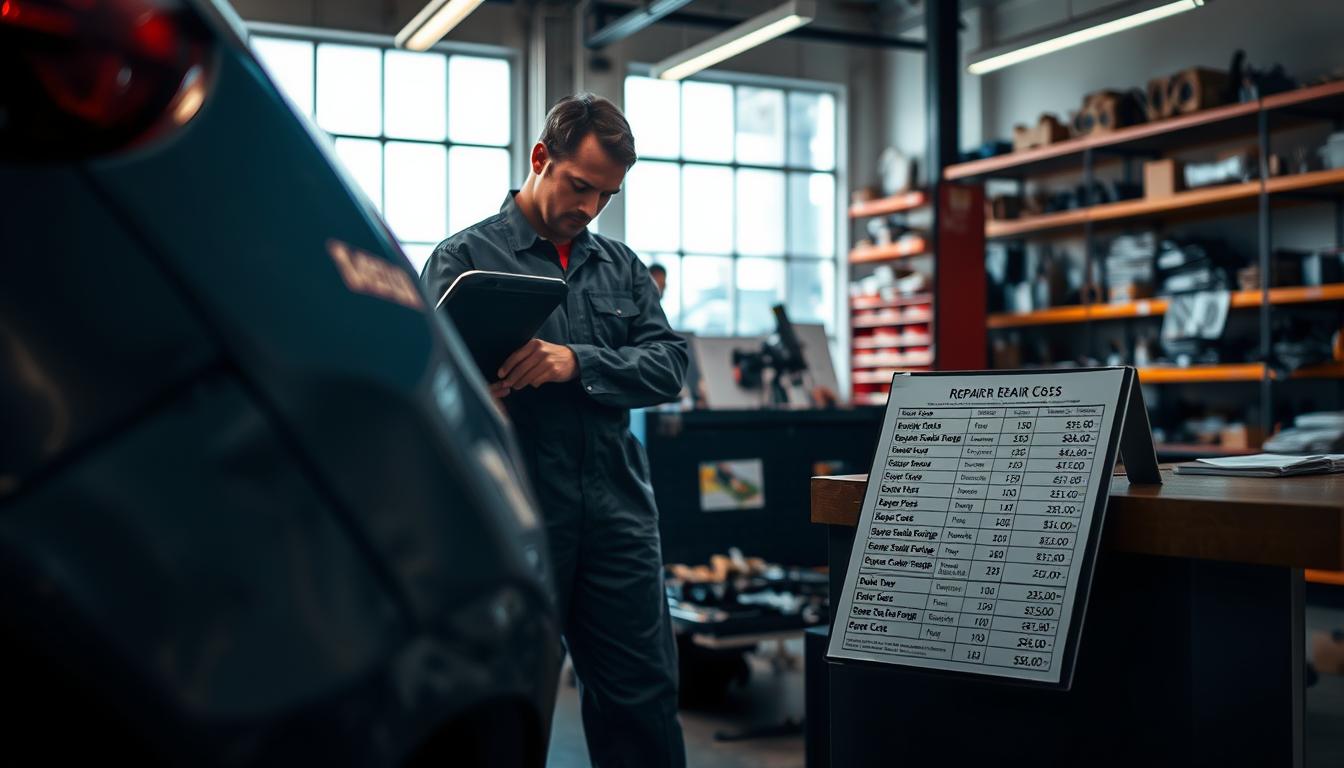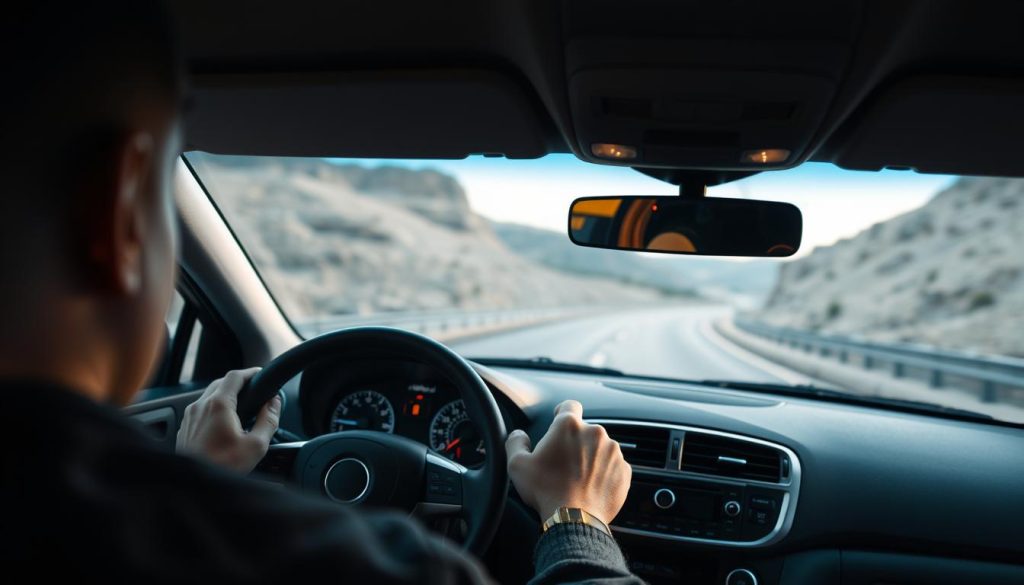
What Types of Paint are Used in Auto Body Repair?

How Insurance Affects Your Collision Repair Costs
Staying safe on the roads is a top priority for drivers. With the number of vehicles on the increase, it’s more important than ever to be aware of road safety practices that can help prevent accidents and keep your car in good condition.
At Miracle Body and Paint, we understand the importance of being prepared and knowing how to maintain your vehicle. In this article, we’ll explore 7 crucial tips that can make a significant difference in ensuring your safety on the road.
Key Takeaways
- Understand the importance of regular vehicle maintenance
- Learn how to drive defensively
- Discover the role of safety features in modern vehicles
- Find out how to handle adverse weather conditions
- Know the steps to take in case of an accident
- Understand the significance of driver awareness
By following these tips, you can significantly reduce the risk of being involved in an accident. If you do find yourself in a collision, trust the experts at Miracle Body and Paint for top-notch collision repair services.
Understanding the Importance of Road Safety
Every time we get behind the wheel, we’re not just driving a car, we’re navigating a complex safety landscape. Road safety is a multifaceted issue that involves not just the driver, but also the vehicle, the road conditions, and other external factors. Understanding the importance of road safety is crucial for preventing accidents and ensuring a safe journey for everyone on the road.
The Impact of Distracted Driving
Distracted driving is a significant threat to road safety. Texting, talking on the phone, or even adjusting the radio can divert a driver’s attention from the road, leading to potentially disastrous consequences. The human brain is not capable of fully multitasking, making distractions while driving particularly dangerous.
Statistics on Road Accidents
The statistics on road accidents are alarming. According to recent data, thousands of lives are lost every year due to road accidents, many of which are preventable. The majority of these accidents are caused by human error, including distracted driving, speeding, and failure to follow traffic rules. Understanding these statistics is crucial for grasping the importance of adhering to road safety tips.
By understanding the risks associated with driving and the statistics on road accidents, we can better appreciate the importance of road safety. Implementing safe driving practices is not just a personal responsibility but a collective effort to make our roads safer.
If you have any concerns about road safety or need assistance with vehicle maintenance, feel free to contact us. We’re here to help you stay safe on the roads.
Tip1: Always Wear Your Seatbelt
Road safety starts with a simple action: wearing your seatbelt. This fundamental driving habit is crucial for protecting yourself and your passengers. By buckling up, you significantly reduce the risk of injury or fatality in the event of an accident.
Benefits of Seatbelt Use
Wearing a seatbelt provides numerous benefits, including reducing the risk of ejection from the vehicle, minimizing the impact of crashes, and preventing injuries to other occupants. Seatbelts are designed to work in conjunction with airbags, and using them together maximizes their effectiveness.
Furthermore, wearing a seatbelt sets a good example for other drivers and passengers, promoting a culture of safety on the roads. It’s a simple yet powerful way to contribute to road safety.
How Seatbelts Save Lives
Seatbelts save lives by restraining occupants in their seats, preventing them from being thrown about the vehicle or ejected during a crash. This restraint reduces the risk of fatal injuries. Statistics have consistently shown that wearing a seatbelt significantly increases your chances of surviving a car accident.
In addition to saving lives, seatbelts also reduce the severity of injuries sustained during accidents. By keeping occupants securely in their seats, seatbelts help prevent collisions with the vehicle’s interior and reduce the risk of being thrown into other occupants or objects.
As a driving tip, always ensure that you and your passengers wear seatbelts before starting the engine. This habit becomes second nature with practice, making it an integral part of your driving routine and contributing to overall driving safety.
Tip2: Avoid Distractions While Driving
To keep your car safe and avoid accidents, it’s vital to avoid distractions while driving. Distracted driving is a leading cause of road accidents, and being aware of common distractions can significantly enhance your safety on the road.
Common Distractions to Watch For
Several factors can divert your attention from driving, including:
- Using your phone for texting or browsing
- Eating or drinking while driving
- Conversing with passengers
- Adjusting the radio or other controls
Being mindful of these distractions is the first step in avoiding them.
Strategies to Stay Focused
To minimize distractions, consider the following driving tips:
- Put your phone on silent mode and keep it out of reach
- Avoid eating complex meals while driving
- Keep conversations with passengers light and avoid deep discussions
- Adjust your vehicle’s settings before you start driving
By implementing these strategies, you can significantly reduce the risk of accidents and enhance your overall driving experience.
At [Company Name], we emphasize the importance of accident prevention through safe driving practices. Our services are designed to support safe driving habits and provide resources for drivers to improve their skills.
Tip3: Follow Speed Limits
One of the simplest yet most effective ways to ensure your safety on the road is to follow the speed limits. Speed limits are designed to match the conditions of the road and traffic, helping to prevent accidents and reduce the risk of injury or death.
Why Speed Limits Matter
Speed limits matter because they help to reduce the risk of accidents by ensuring that drivers are traveling at a safe speed for the given road conditions. When speed limits are followed, drivers have more time to react to unexpected situations, such as a pedestrian stepping into the road or another vehicle cutting into their path.
Moreover, speed limits help to protect vulnerable road users such as pedestrians, cyclists, and motorcyclists, who are more susceptible to injury in the event of a collision.
Consequences of Speeding
Speeding can have severe consequences, including increased stopping distances, reduced reaction times, and a higher risk of losing control of the vehicle. When drivers exceed the speed limit, they are more likely to be involved in a collision, which can result in serious injury or death.
The consequences of speeding are not limited to the driver; they can also affect other road users, including passengers, pedestrians, and other drivers. Furthermore, speeding can lead to fines and penalties, as well as increased insurance costs and potential legal repercussions.
By following speed limits, drivers can significantly reduce their risk of being involved in a collision and help to create a safer driving environment for everyone on the road.
Tip4: Keep a Safe Following Distance
One of the simplest yet most effective driving tips is to keep a safe distance from the vehicle in front.
Maintaining a safe following distance gives you the time and space needed to react to unexpected situations on the road, significantly reducing the risk of accidents. It’s a fundamental principle of road safety that is often overlooked.
The Three-Second Rule Explained
The three-second rule is a simple guideline to help you maintain a safe following distance. To apply this rule, choose a fixed point on the road ahead, such as a sign or a marking. When the vehicle in front passes this point, count “one-thousand-one, one-thousand-two, one-thousand-three.” If you reach the same point before you finish counting, you are following too closely.
Key steps to apply the three-second rule:
- Choose a fixed point on the road ahead.
- Count to three after the vehicle in front passes the point.
- Adjust your following distance accordingly.
Adjusting Distance in Different Conditions
The three-second rule is a baseline that may need to be adjusted based on driving conditions. For instance, in rain, snow, or fog, it’s advisable to increase your following distance to four or even five seconds. This extra time can be crucial for stopping or reacting to hazards on slippery or reduced visibility roads.
Additionally, when driving in heavy traffic, construction zones, or at night, it’s wise to be extra cautious and increase your following distance. Being aware of your surroundings and adjusting your driving habits accordingly is key to road safety.
Here are some additional tips for adjusting your following distance:
- If you’re driving a larger vehicle or towing a trailer, increase your following distance.
- Be cautious when approaching intersections or pedestrian crossings.
- Adjust your speed according to the road conditions.
Tip5: Be Aware of Weather Conditions
Understanding and adapting to weather conditions can significantly reduce the risk of accidents. Weather plays a crucial role in road safety, and being aware of the conditions can help you prepare and adjust your driving accordingly.

Driving in Rain and Snow
Driving in rain or snow requires extra caution. Reduced visibility and slippery roads can make driving hazardous. To drive safely in these conditions, reduce your speed and increase your following distance. Using low gear when driving uphill in snowy or icy conditions can also help maintain control of your vehicle.
Additionally, ensure your windshield wipers are in good condition to maintain clear visibility. For snowy conditions, make sure your vehicle is equipped with snow tires or chains if necessary.
Preparing Your Vehicle for Seasonal Changes
Preparing your vehicle for seasonal changes is crucial for safe driving. Before the onset of winter, check your vehicle’s battery, antifreeze, and heating system. Ensure your tires have adequate tread depth and consider switching to snow tires if you live in an area prone to heavy snowfall.
- Check your windshield wipers and replace them if necessary.
- Ensure your vehicle’s lights are clean and functional.
- Keep a winter emergency kit in your car, including items like a blanket, flashlight, and first-aid kit.
Tip6: Use Turn Signals and Headlights
Turn signals and headlights are essential components of safe driving, and their proper use can significantly reduce the risk of accidents. By using these features correctly, you not only ensure your safety but also contribute to a more predictable and safe driving environment for everyone on the road.
Importance of Signaling and Visibility
Using turn signals is a fundamental aspect of driving that communicates your intentions to other drivers, pedestrians, and cyclists. It helps prevent confusion and reduces the likelihood of collisions. Signaling your turns or lane changes gives other road users a clear understanding of your next move, allowing them to react accordingly.
Visibility is equally crucial, especially during low-light conditions or when weather conditions reduce visibility. Headlights help you see the road ahead and make your vehicle more visible to others. This is particularly important on highways or rural roads where there might be limited lighting.
When to Use Your Headlights
It’s essential to know when to turn on your headlights to maximize visibility and safety. Here are some scenarios:
- During dawn, dusk, or nighttime when visibility is reduced.
- In rain, fog, snow, or other weather conditions that limit visibility.
- When driving through tunnels or areas with poor lighting.
- If you’re experiencing difficulty seeing other vehicles or the road ahead.
Using your headlights appropriately not only helps you see better but also makes your vehicle more visible to other drivers, reducing the risk of accidents. Remember, safety is a two-way street; it’s not just about being seen, but also about seeing others.
By making turn signals and headlights a habitual part of your driving routine, you significantly enhance your safety on the road and contribute to a more courteous and safe driving culture.
Tip7: Stay Sober Behind the Wheel
One of the most effective driving tips is to stay sober, ensuring you’re always in control on the road. Driving under the influence (DUI) is a serious offense that endangers not just the driver, but also passengers, pedestrians, and other road users.
The Dangers of Driving Under the Influence
Driving under the influence significantly impairs your ability to drive safely. Alcohol and drugs can affect reaction times, judgment, and coordination, making it difficult to operate a vehicle.
The consequences of DUI can be devastating, leading to accidents, injuries, and even fatalities. It’s not just about the legal penalties; it’s about the risk you pose to yourself and others on the road.
Resources for Finding a Safe Ride Home
If you find yourself in a situation where you’ve been drinking or taking substances, it’s crucial to plan ahead for a safe ride home. There are several resources available:
- Designated driver services
- Ride-sharing apps like Uber and Lyft
- Taxi services
- Public transportation
These options can help ensure you get home safely without putting yourself or others at risk.
Staying sober behind the wheel is a simple yet effective road safety tip that can save lives. By making responsible choices, you contribute to a safer driving environment for everyone.
Understanding the Role of Defensive Driving
The art of defensive driving is not just about following rules; it’s about anticipating and reacting to the actions of other drivers. This proactive approach to driving can significantly reduce the risk of accidents and enhance overall road safety.
Techniques for Anticipating Other Drivers’ Actions
Defensive driving involves a set of techniques that help drivers anticipate and respond to potential hazards on the road. Some key strategies include:
- Maintaining a safe following distance to have enough time to react to the actions of the vehicle in front.
- Being aware of your surroundings, including other cars, pedestrians, and road conditions.
- Anticipating the actions of other drivers, such as potential lane changes or sudden stops.
By mastering these techniques, drivers can significantly reduce their risk of being involved in an accident.

Benefits of Defensive Driving Courses
Defensive driving courses offer numerous benefits, including improved driving skills, reduced insurance rates, and the potential for ticket dismissal. These courses teach drivers how to anticipate hazards, manage risk, and drive more safely.
Some of the key benefits of defensive driving courses include:
- Improved driving skills: By learning advanced driving techniques, drivers can become more confident and competent behind the wheel.
- Insurance discounts: Many insurance companies offer discounts to drivers who complete a defensive driving course.
- Ticket dismissal: In some jurisdictions, completing a defensive driving course can result in the dismissal of a traffic ticket.
Overall, defensive driving courses are an excellent way for drivers to enhance their skills, reduce their risk of being involved in an accident, and potentially save money on their insurance premiums.
Vehicle Maintenance for Safety
Proper vehicle maintenance is a key factor in maintaining road safety and reducing the risk of accidents. Ensuring your vehicle is in good condition not only protects you and your passengers but also other road users.
Essential Checks Before Hitting the Road
Before you start your journey, there are several essential checks to perform. These include:
- Checking your tire pressure and tread depth
- Ensuring all lights, including headlights, taillights, and brake lights, are functioning correctly
- Verifying that your vehicle’s fluids (oil, coolant, brake fluid) are at the recommended levels
- Inspecting your brakes for any signs of wear
- Checking your battery condition and terminals for corrosion
Keeping Your Tires and Brakes in Good Condition
Your vehicle’s tires and brakes are critical for safety. Proper tire maintenance involves regular checks for wear and tear, maintaining the correct tire pressure, and rotating your tires as recommended by the manufacturer. For brakes, it’s essential to have them inspected regularly and to replace brake pads or other components as needed.
Regular maintenance can help identify potential issues before they become major problems, ensuring your vehicle remains safe to drive.
By following these tips and maintaining your vehicle, you can significantly enhance your safety on the road. Regular checks and maintenance not only help prevent accidents but also contribute to a smoother and more enjoyable driving experience.
The Importance of Keeping Emergency Supplies
Being prepared for the unexpected is crucial when driving. Keeping emergency supplies in your vehicle can make a significant difference in case of an accident or breakdown. This practice is part of following effective driving tips to ensure your safety on the road.
Essential Items for Roadside Emergencies
Some must-have items include a first-aid kit, jumper cables, a spare tire, and a flashlight. These items can help you handle common roadside emergencies and avoid being stranded.
Preparing for Long Road Trips
Before embarking on a long road trip, check your vehicle’s condition, plan your route, and pack emergency supplies. This preparation is key to a safe and enjoyable journey, aligning with valuable driving tips.
If you do encounter an accident, trust the experts at Miracle Body and Paint to restore your vehicle to its original condition. With locations in North West San Antonio – Leon Valley and North East San Antonio, they offer top-notch collision repair services. Visit them for a reliable and efficient repair experience.



